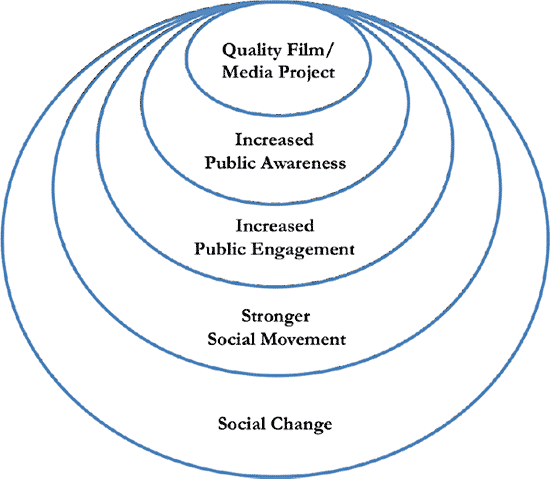[image src=”http://www.darrenkrape.com/wp-content/uploads/2009/10/measurement-thumb.png” align=”left”]
Recently I had the pleasure to participate in the Public Media Camp, an unconference focused on strengthening local and national public broadcasting. A good portion of the discussion focused on the disruptive and new opportunities being presented by Internet-based dissemination and social media.
Of Hubs and Spokes
While the focus on social media related well to my work in public diplomacy, the very structure of public media actually seems quite similar to the hub and spoke model of the central State Department in Washington and the various embassies, consulates and missions scattered around the world. As with public broadcasting, content is produced and disseminated in Washington and the very diverse missions overseas. Just as NPR or PBS in Washington balances the needs of their direct national audience with the needs of their affiliate stations, the State Department also has to support an international audience for its America.gov properties while meeting overseas mission needs.
Additionally, most public media outlets focus more on informing audiences and social change than increasing profits. Public diplomacy has similar goals: changing perceptions about the United States’ and its policies and creating a better environment for U.S. goals, such as democratization, improving religious freedoms and so on. Without profits as a baseline metric, both organizations aim for more intangible goals, such as those elucidated above. This makes measurement more challenging, with related knock-on effects.
Measuring Impact
Fortunately, public media and affiliated organizations are taking on a number of these challenges, most especially measurement. The Fledgling Fund, an NGO focused on helping social change projects get off the ground, has done quite a bit of work figuring out how to measure such an amorphous goal as creating social impact. Drawing from their experience, they’ve created a five-stage model which helps measure social impact of a program.
Here are the steps (scroll down for a diagram):
- Media quality: Most basically, this stage asks if the subject is a quality piece of media? Are the characters strong and well defined? Is the story well-toned? Will it get press attention, resonate with viewers, generate online buzz and so on?
- Raising public awareness: Where is the topic in the public consciousness? Some topics don’t need more more widespread attention, so media focused solely on raising awareness isn’t necessary. However, some topics are not well known, so a basic introduction or media focused on moving beyond the choir may be necessary.
- Increased public engagement: There is the largest leap in the five stages, moving from awareness to engagement. Essentially, this is the leap from passive attention (viewing a film, reading a web site) to active engagement (promoting the film to friends, commenting on a web site). Reaching this state indicates a change in attitudes, beliefs and behaviors.
- Stronger social movement: At this stage, people have moved from low level engagement to greater collective action. If the media engaged the choir, then they’ve become more creative or effective after engaging with your media. If the media reached new audiences, then they’ve joined existing organizations or created their own to reach the goals elucidated in your media.
- Social change: This is the ultimate goal and, often, the most difficult to reach. At this stage the media has encouraged policy or legislative change, a tangible shift in the public dialog on the topic or influential changes in citizen or consumer behavior.

This model seems to suit public diplomacy media efforts well, though it would require some time spent on teasing out the specific measures, qualitative and quantitative, for each step. The Fledgling Fund has a good whitepaper on the model (PDF) that delves much deeper while also providing some useful real-world case studies.
There were a few more gems from the public media camp that I hope to write-up in the next week or so.